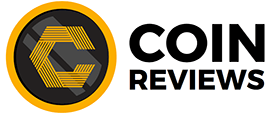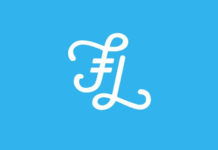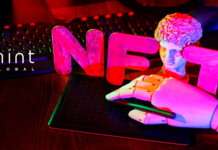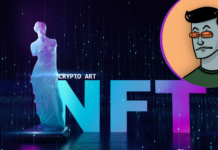
At the core of most cryptocurrency projects, you’ll find the same basic technology: a distributed ledger made up of transactions that are tracked in “blocks” and linked together in sequence on a “chain.” There’s a lot of variation beyond that, but that basic structure is the core of blockchain technology (and the source of the term “blockchain”).
But IOTA is different. It’s a cryptocurrency project based on a distributed ledger, but there are no blocks, and there is no chain. It is, in essence, blockchain without the blockchain. Instead, it uses a unique data structure it calls the Tangle.
Why No Blockchain?
We’ll talk about how the Tangle works in a moment, but first let’s talk about the why. What’s the benefit of getting the block-and-chain out of blockchain?
The main benefit is scalability. On a traditional blockchain network like Bitcoin’s, consensus is achieved by mining “blocks” in sequence. This makes the network highly secure but it’s also time- and resource-intensive, which makes scaling difficult.
But in IOTA’s Tangle, there’s no mining and no need for a separate process of consensus. Instead, to initiate a transaction on the IOTA network, a user must first verify two previous transactions. This allows for more network scalability and eliminates the need for transaction fees entirely – users pay for their transactions with the minor computational work they do verifying previous transactions on the Tangle.
The high network scalability and lack of transaction fees makes executing tiny transactions feasible, and IOTA sees this structure as the ideal backbone of the machine-to-machine networks of the future. As the Internet of Things (IoT) becomes increasingly prevalent in our lives, all of these machines will need to transact with each other in a way that is quick, free, and secure.
What is the Tangle?

The Tangle is a data structure; specifically a Directed Acyclic Graph (DAG). The image above offers a very simple explanation if you think of each square as representing a transaction, and each arrow as representing transaction approval. Time moves left to right, so the first transaction on the network (0), is approved by 1 and 2. Transaction 1 is approved by 3 and 4, transaction 2 is approved by 4 and 5, and so on.
If there aren’t enough “tips” – unverified transactions – to approve, an IOTA transaction can go through approving only a single previous transaction, but typically each transaction must verify at least two previous transactions on the network. In this way, all transactions are verified in a distributed manner, but each individual user only has to do a tiny amount of verification work.
This structure means that as the network scales, it should actually get faster, as there are more “tips” available for verification and more transactions looking for “tips” to verify.
Quantum Secure
Another main selling point of IOTA is that it claims to be quantum-secure, meaning that its cryptographic security won’t be breakable by quantum computers.
What does that mean, and why does it matter?
Basically, traditional cryptography is built on the idea that some calculations simply take too long for a traditional computer to solve – if you don’t already know the answer, running the math to determine the answer would take years, even with a supercomputer.
But quantum computers – computers that store and measure data using quantum bits – will break a lot of traditional cryptography once they’re available, because for certain kinds of calculations they’ll be many millions of times faster than traditional computers. Quantum computers aren’t available yet, but they’re on the horizon.
IOTA preemptively deals with the quantum threat by using a its own form of cryptography that integrates Winternitz signatures (PDF link). This approach is thought to be quantum-resistant, although it’s not battle-tested since quantum computers don’t actually exist yet.
The Token
IOTA may not have blocks or chains, but it does have the other traditional feature blockchain projects share: a cryptocurrency token.
Technically speaking, IOTA’s main token is IOTA, but it’s traded on exchanges as mIOTA, with each mIOTA being equal to one million IOTA. With more than 2.7 billion mIOTA in circulation, that means there are quadrillions of IOTA, and that’s the point – since the network is designed for machine-to-machine transactions in the future, its transaction tokens need to be both numerous and affordable to make use of the network economically advantageous for IoT products.
Crypto traders don’t deal in IOTA, though, so if your purpose is trading or investment, you can consider mIOTA to be IOTA’s only relevant token. The 2.7 billion mIOTA tokens currently in circulation are the only tokens that will ever exist; the IOTA team does not hold any mIOTA in reserve and there is no way to mine mIOTA.
Open Questions About IOTA
IOTA’s forward-thinking cryptographic approach could make it more secure than other crypto projects, but it could also make it more vulnerable. By implementing their own form of cryptography, the IOTA team has broken what some consider to be the cardinal rule of encryption: “Don’t roll your own crypto.”
The logic behind that thinking is pretty simple: existing crypto systems are battle-hardened and have proved themselves by resisting real-world attacks already. If you develop your own system, it might contain flaws and vulnerabilities you missed that hackers will be able to take advantage of. And indeed, last year a team at MIT found a major vulnerability in IOTA’s system.
That flaw has since been patched, but the question remains – as it does for any new, untested crypto system – what other vulnerabilities might be lurking in IOTA’s relatively untested code that attackers could exploit? The answer might be “none,” but it will be difficult to know for sure until IOTA goes mainstream and its security system gets put through its paces by hackers.
Another popular complaint about IOTA is its use of a “Coordinator” – a kind of central, transactional checkpoint – to prevent certain kinds of attacks. It means that right now, IOTA’s network isn’t truly distributed. That can cause problems (when the coordinator goes down, so does a lot of the network), and of course the concept of centralization is also anathema to many crypto fans.
The IOTA Foundation says that the Coordinator is a temporary measure, not a long-term feature of the system.
Of course, questions inevitable for a project like IOTA, given how different it is from the established and time-tested blockchain projects we’re all familiar with. But there’s no denying that IOTA and its Tangle structure are an interesting experiment, and they might just represent the next evolution of blockchain technology.



































